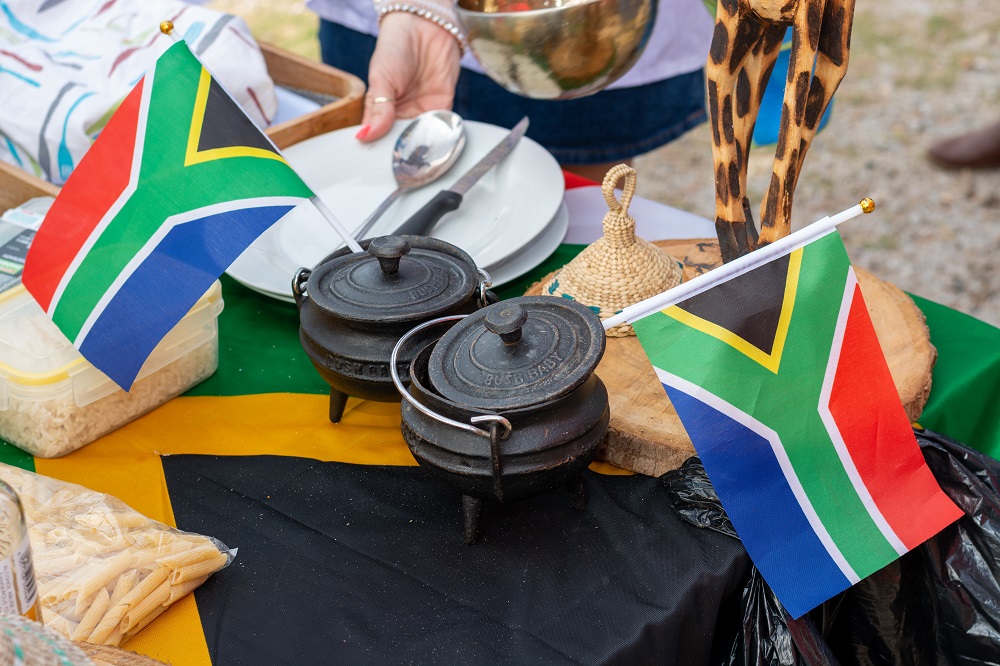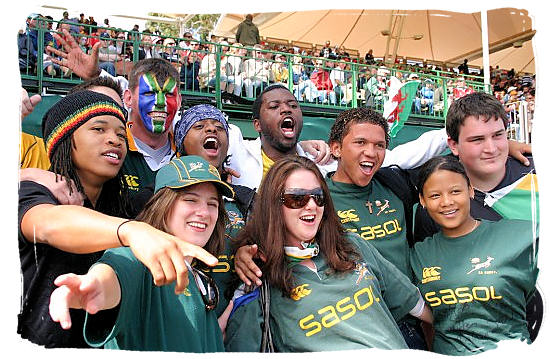How South African Culture Today can Save You Time, Stress, and Money.
How South African Culture Today can Save You Time, Stress, and Money.
Blog Article
Not known Details About South African Culture Today
Table of ContentsThe Of South African Culture TodayThe smart Trick of South African Culture Today That Nobody is DiscussingSome Known Details About South African Culture Today The Facts About South African Culture Today RevealedOur South African Culture Today StatementsHow South African Culture Today can Save You Time, Stress, and Money.
This adheres to with vocal singing and drum beating. The groom and bride after that meet with the senior citizens and discuss the value of their union. A matter of value in Zambian towns is the passing away of loved ones. All members of the town placed cash, effort and time together for the interment of the deceased.Music and dance is a very important aspect of the Zambian culture. The various tribal devices have their very own dancing types; nevertheless, makishi is typical amongst all tribes.
Some Known Questions About South African Culture Today.
When it concerns songs, drums are used one of the most, with a variety of drumming events. In Zambia, bulk of individuals are Christian; Protestant and Roman Catholic. There are tiny groups of Muslims and Hindus, with the rest following regional indigenous tribal beliefs.

South African heritage and culture is greatly varied, and is composed of several groups of individuals that each have their very own practices and ideas. Having such a variety of individuals and societies is what makes South Africa so unique. In real feeling of the expression, we are a rainbow country.
Making it the 7th on the list of nations with the most Portuguese individuals in it outside of Portugal. Portuguese is not just a society, however it is likewise a language and a nationality. Portuguese individuals stem from the country of Portugal in Europe, however, due to Portugal (like several various other nations in Europe) checking out the world and overcoming other nations throughout the 15th 20th centuries, South Africa has what we call Portuguese South African's living in it.
South African Culture Today for Dummies
Amongst the prominent attributes of the topography is a plateau that covers almost two thirds of the facility of the nation. The plateau complicated climbs toward the southeast, where it climaxes in the Drakensberg array, part of a cliff that divides the plateau from the coastal areas. The Drakensburg includes Champagne Castle, the greatest height in the country.
The area north of the Witwatersrand, called the bushveld, slopes downward from east to west towards the Limpopo River, which creates the international boundary. The western area of the plateau, the middleveld, also descends in the direction of the west and differs in elevation between the highveld and bushveld. In between the Drakensburg and the eastern and southerly coastline, the land descends to the sea.
Nearer the coastline there is a low-lying level called the eastern lowveld. Southwest of the plateau the nation becomes gradually extra arid, paving the way to the hostile desert of the Great Karroo, verged on the east by the lower, much better sprinkled plateau of the Little Karroo. Dividing the dry southern interior from the sandy littoral of the southerly shore and West Cape is an additional range, the Langeberg.
South African Culture Today Fundamentals Explained
The nation's racially, my link ethnically, and politically split background has actually created nationwide and subnational signs that still work as symbols of the country, and others symbols that are approved just by specific groups. The monuments to white inhabitant occupation and political supremacy, such as the Afrikaner Voortrekker ("pioneer") Monument in Pretoria and the Rhodes Monolith recognizing the British colonial empire builder and Cape prime minister Cecil Rhodes, continue to be sectarian icons.
The very first contemporary residents were the San ("bushman") hunter-gatherers and the Khoi ("Hottentot") peoples, that herded livestock (South African culture today). The San might have been existing for countless years and left proof of their visibility in countless ancient cavern paints ("rock art"). Bantu-speaking clans that were the ancestors of the Nguni (today's amaZulu, linked here amaXhosa, amaSwazi, and vaTsonga individuals) and Tswana-Sotho language groups (today's Batswana and Southern and Northern Basotho) migrated below eastern Africa as very early as the fifteenth century

Both previous republics of the Orange Free State and Transvaal (South African Republic) were established by Afrikaner settlers that beat and dispossessed the Basotho and Batswana. Lesotho would have been forcibly included right into the Orange Free State without the extension of British protection in 1869. The utmost unification of the country resulted from the South African War (18991902) in between the British and the two Afrikaner republics, which decreased the nation to destroy at the beginning of the twentieth century.
Afrikaners traditionally considered themselves the just real South Africans and, while giving full citizenship to all citizens of European descent, refuted that status to people of color up until the autonomous change of 1994. British South Africans preserve a sense of social and social link to Great Britain without compromising their identification as South Africans.
Excitement About South African Culture Today
The variety and fragmentation within ethnic collections and the balance of tensions between those teams throughout the twentieth century stopped interethnic civil conflict. While intergroup tensions over sources, privileges, and political prominence continue to be, those problems are as likely to pit Zulu versus Zulu as Zulu versus Xhosa or African against Afrikaner.
From colonial India, British merchants and managers brought the bent metal ornamental roofs and slim lace work columns that still exemplify the outdoor patios of cottages arounds and cities throughout the country. Holy places add a crucial architectural facet also in the smallest communities. In addition to the soaring steeples and timeless stonework of Afrikaans Dutch Reformed churches, Anglican churches, synagogues, mosques, and Hindu shrines provide range to the religious building scene.

Slaughtering and the brewing of typical grain beer are crucial in securing the involvement and a good reputation of the ancestors who are thought about the guardians of excellent lot of money, prosperity, and well-being. Indian neighborhoods keep their native culinary traditions and apply them on Islamic and Hindu ritual and ritualistic celebrations. Afrikaners and Coloured individuals collect at weekends and special occasions at multifamily barbecues called braais, where neighborhood bonds are enhanced.
Due to the fact that this was the primary economic venture of both black Africans and white homesteaders, conflict between those groups fixated the belongings of grazing land and livestock. In 1867, the largest diamond deposits on the planet were found at Kimberley in the west central area. The riches from those fields helped finance the exploitation of the greatest gold reef worldwide, which was he has a good point found on the Witwatersrand in 1886.
Not known Facts About South African Culture Today
This led to misconceptions and calculated misrepresentation in the negotiations of white settlers and government authorities with African chiefs during the early american period (South African culture today). In the facility of African books, some aspects of public and mainly "tribal count on" land period were preserved, and even in white country locations, kinds of common period were still practiced in locations with African neighborhoods
After the democratic makeover of 1994, programs for land restitution, redistribution, and reform were set up, but progression has been slow-moving. The white minority still manages eighty percent of the land. In the wake of farming land invasions in Zimbabwe, the Division of Land Affairs has actually pledged to speed up land redistribution.
Report this page